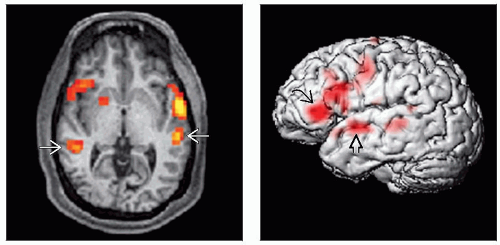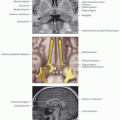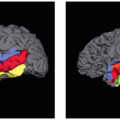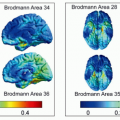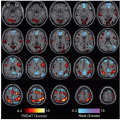Phrase Recognition
Lubdha M. Shah, MD
Key Facts
Anatomy-based Imaging Issues
Syntactic processing predominantly shows brain activity in left hemisphere
Sentence processing associated with expanded activation of frontal operculum and temporal poles
Protocol
1 mm isotropic MPRAGE acquisition for anatomic template
BOLD echoplanar images
Timing
Block design alternating 20 seconds of auditory stimuli with 20 seconds of no stimuli
4-minute duration
Instructions
Auditory stimuli were delivered to sound-blocking pneumatic headphones
Phrases describe a common word
e.g., “Jewelry we wear around our neck,” “the funny guys at the circus,” and “water falling from the sky”
Subject instructed to think silently of a word that each phrase describes
Assessment
Expected language regions: Wernicke area, Broca area, lateral premotor cortex, supplementary motor area, left dorsolateral prefrontal cortex
Preprocessing
Distortion, motion, slice timing correction
Coregistration to MPRAGE or T2 anatomic images for overlay of BOLD signal
Statistical Analysis
General linear model
Comparing “on” epochs with “off” epochs
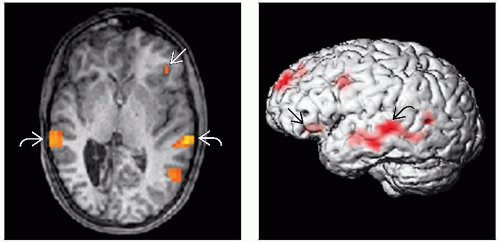 (Left) Axial MPRAGE with BOLD signal overlay reveals activation in bilateral superior temporal gyri
 . An auditory responsive naming paradigm is useful for language lateralization, particularly for the localization of posterior language regions (Wernicke area). The task also localizes frontal speech areas . An auditory responsive naming paradigm is useful for language lateralization, particularly for the localization of posterior language regions (Wernicke area). The task also localizes frontal speech areas  as it requires the patient to generate a word to a given verbal descriptor. (Right) 3D surface rendering of the same patient shows activation in the left inferior frontal as it requires the patient to generate a word to a given verbal descriptor. (Right) 3D surface rendering of the same patient shows activation in the left inferior frontal  and superior temporal gyri and superior temporal gyri  . .Stay updated, free articles. Join our Telegram channel
Full access? Get Clinical Tree
 Get Clinical Tree app for offline access
Get Clinical Tree app for offline access

|
